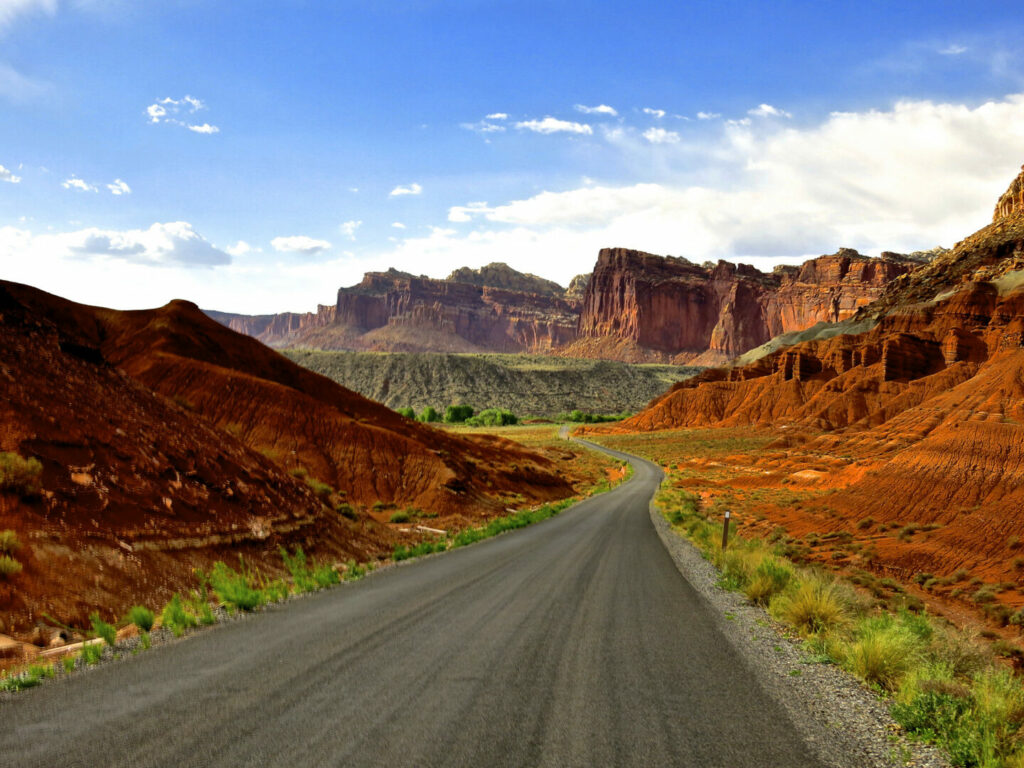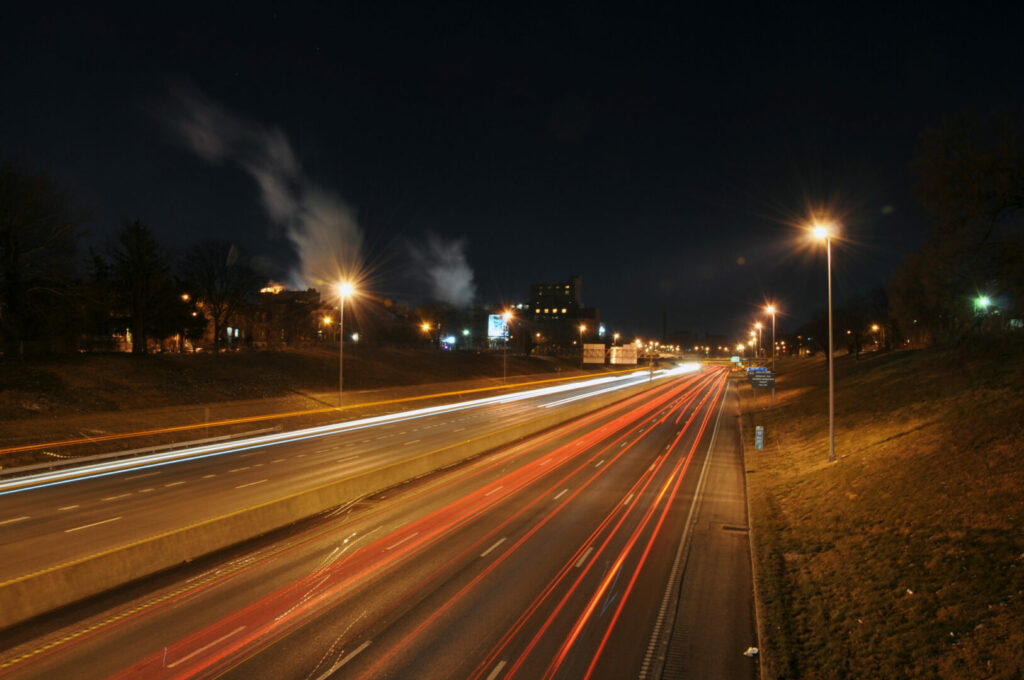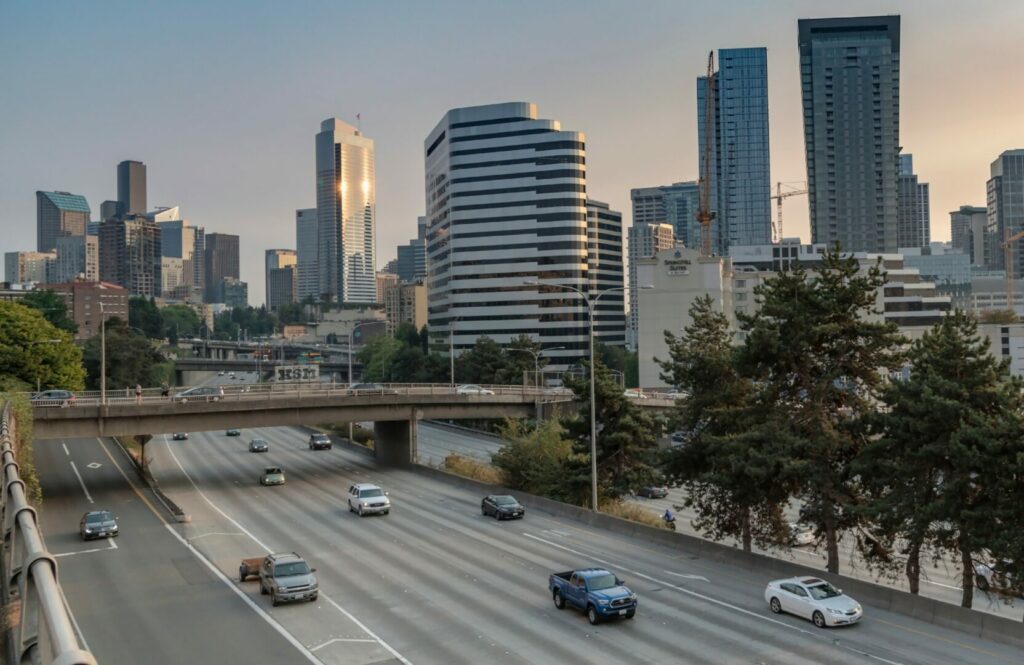Table of Contents Show
A road trip across America is a bucket list item for many people, and we’ve got the inside tips and tricks on deciphering interstates vs. highways. Knowing the difference between these terms can help make your road trip route planning much easier. Thus, you’ll have more time and energy to play instead of plan. Let’s explore the difference between these U.S. roadways.
What Is the Legal Definition of a Highway?
Many of us call every road we travel on a highway. And why not? There are thousands of them across the country. But knowing the legal definition can help any road trip be a smooth ride. So what is an interstate vs. a highway?
Let’s start with this. All freeways are highways, but not all highways are freeways. A highway is a public road, street, or parkway designated for motor vehicle travel. They typically have well-made, solid surfaces. Some have intersections, while others have on/off ramps. You’ll find highways in rural and urban areas designed to connect different areas.

What Is the Difference Between a Highway and Freeway?
A freeway is a controlled-access highway. You can only access a freeway using on/off ramps. Most freeways can accommodate a large volume of traffic. They also generally have higher speed limits and run through urban settings.
A highway doesn’t have to have controlled access points, higher speeds, and many lanes. Additionally, highways usually go through more rural areas and smaller towns. However, freeways are not interstates because they don’t extend into other states or even other parts of one state.
What Is the Difference Between a Highway and an Interstate?
Most people use interstate vs. highway interchangeably, but there is a difference between the two. Highways are the overarching classification for both freeways and interstates. They consist of many types of roads with different ways to access them. And they have varying speed limits and locations.
Local and state governments control highways, and the federal government maintains interstates. The Interstate System began in 1956 to create a network of high-speed roads connecting major cities across the country. Today, we have over 46,000 miles of interstate highways in the United States. While they may seem similar, interstates and highways serve different purposes and have different regulations.
What Determines an Interstate?
Let’s explore interstates vs. highways vs. freeways. Interstates are very similar to freeways. However, interstates run through more than one state. They must be limited access roads, meaning you can only access them by on/off ramps with no stop signs or lights.
Additionally, when not going through large urban areas, the speeds on the interstate system can reach up to 80 mph, depending on state laws. Finally, the federal government regulates the width of lanes, shoulders, and number of lanes.
Keep in Mind: How long would it take you to drive across Texas? Let’s find out!
What Are the 4 State Capitals Not Served by an Interstate?
With such an expansive system of thousands of miles of road, you’d think every state capital could boast that an interstate runs through it. However, there are four capital cities not served by an interstate. Those cities are Juneau, Ala.; Dover, Del.; Jefferson City, Mo.; and Pierre, S. D. However, if you debate over interstates vs. highways, you’ll find that these cities do have highways.

What Is the Oldest Interstate?
Ironically, the oldest interstate was originally not part of the interstate system. How does that happen? Grand Central Parkway in Queens, New York, opened as a public roadway in 1936. It later transitioned into the interstate system as I-278, gaining its interstate status in the 1960s.
What Is the Longest Interstate in the U.S.?
The longest interstate in the United States runs coast to coast from Seattle, Wash., to Boston, Mass. It covers 3,085 miles and runs through 13 states. Maybe your epic road trip will include all 13. You can enjoy the Pacific Northwest in Washington and the Rockies through Idaho, Montana, and Wyoming.
Enjoy the great plains in South Dakota, and weave your way through the Midwest in Minnesota, Wisconsin, Illinois, and Indiana. Stop in Ohio, or continue to the East Coast in Pennsylvania, New York, and Massachusetts. Interstate vs. highway, what will you travel when choosing your 13-state road trip?
Keep in Mind: If you’re planning to travel across America, you need to add these 15 Country Songs to your playlist!

How Are Interstate Routes Numbered?
The numbering of the interstates is yet another very specific item. North and south running interstates have odd numbers, and the even-numbered interstates run east to west. They also go in order.
The north-south routes have the lowest numbers starting in the west. The east-west routes start numbering in the South. For example, I-5 goes from San Diego, Cali., to Blaine, Wash. But I-10 goes from Los Angeles, Cali., to Jacksonville, Fla.
In larger metropolitan areas, beltways offer routes around the cities instead of through them. These are still part of the interstate system and consist of numbers using three digits. These don’t have to be unique to each state, meaning more than one state could have an I-280.
And we can’t forget about the numerous exits along the interstate. Exits go in order with mile markers posted along the way, starting at the most western or southern point.
But at the end of the day, what matters about interstates vs. highways is the enjoyment you’ll get out of them as you drive. Windows open, hair flying, and nothing but the open road in front of you.






